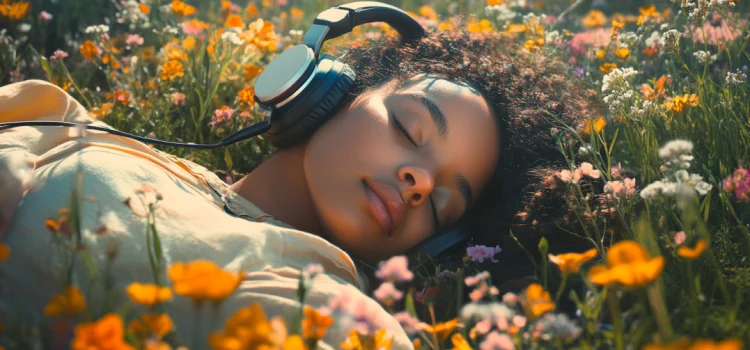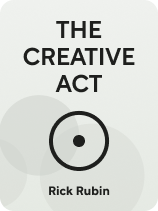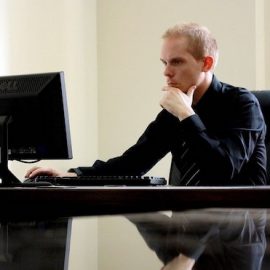

This article is an excerpt from the Shortform book guide to "The Creative Act" by Rick Rubin. Shortform has the world's best summaries and analyses of books you should be reading.
Like this article? Sign up for a free trial here.
Do you want to learn how to be more creative? Is creativity a habit? Where can you find inspiration?
American record producer Rick Rubin offers advice for anyone seeking to be more creative or who is stuck in a creative block. Some of his advice includes mindfulness, creating creative habits, learning to be more open, and more.
Continue reading if you want to learn how to become more creative.
How Can You Be More Creative?
Want to know how to be more creative? Rubin argues that creativity is less about what you produce and more about how you engage with the world. He offers suggestions for how to cultivate a mindset that invites creativity: You must pay attention, be open and playful, and build a creative habit.
1. Be Mindful
First, Rubin argues, creativity requires paying attention. He says that being truly aware—both of yourself and your surroundings—can dramatically enhance your ability to create profound and meaningful work.
Rubin encourages you to cultivate a practice of quiet observation, suggesting that noticing the minute details around you can open up new avenues for inspiration. Rubin emphasizes that your awareness should extend beyond the physical world—also tune into your inner thoughts and feelings without judgment. By doing so, you can tap into a deeper level of intuition and authenticity in your work.
2. Be Open and Playful
According to Rubin, curiosity requires you to be open to multiple possibilities so he suggests staying open and playful. He explains that as children we are immensely creative, in part because we are more focused on what could be rather than what is. However, as we grow older, we begin to categorize, compare, and edit information in ways that make it easier to process, but also limit our creativity. For example, if a child is given a piece of paper, they might see it not just as a medium for drawing or writing, but perhaps as raw material for making a paper boat or a ticket to an imaginary theme park. They see possibilities beyond the obvious.
Being open to unexpected possibilities sometimes means you need to ignore the rules. According to Rubin, rules come in many forms: They may be self-imposed, be common practices in your field or artistic medium, or come from external expectations. While Rubin explains that traditional ways of thinking and doing things can be a place to start, you should never be too attached to them. To keep your thinking fresh, he recommends you consistently question why you’re doing something, and notice when you’re limited by conscious or unconscious rules.
When you’re trying to think outside the box, cultivate a beginner’s mindset, says Rubin. This approach—characterized by openness, humility, and curiosity—encourages you to break out of entrenched ways of thinking and working and see your work with fresh eyes, encouraging you to explore and experiment. By adopting this mindset, you pave the way for innovation. According to Rubin, true creative breakthroughs often stem from the willingness to explore uncharted territory and accept the possibility of failure.
3. Build a Creative Habit
Rubin writes that when you pay attention and stay open, you continuously gather information to serve as source material for later creative work. However, in order to do creative work, you must build a creative habit.
To support your creativity, he suggests setting up daily or weekly rituals that facilitate your entry into an immersive creative state. He recommends creating a predictable space and time where your mind knows it’s time to switch into a creative mode. According to Rubin, these rituals could range from meditating before starting your work to establishing a routine time and place where you can be uninterrupted and focused.
Rubin emphasizes the importance of consistency in these practices. It’s not just about setting aside time for creativity when you feel inspired; it’s about committing to these periods regularly, regardless of whether inspiration strikes immediately. This dedication helps in building a muscle for creativity, making it easier over time to enter into deep creative work.
Furthermore, Rubin suggests minimizing distractions during these ritual periods. This could mean turning off your phone, using tools that block digital interruptions, or choosing environments where you’re less likely to be disturbed. The goal is to protect the sanctity of your creative time as much as possible.
At times focusing on your creative work will require you to fully immerse yourself in a project, giving your undivided attention to your project for extended periods and allowing it to consume your thoughts and energy. Rubin argues that when you immerse yourself, you develop a deeper connection with your work, potentially entering a flow state of effortless concentration and peak performance. This intense focus helps you overcome creative blocks and heightens awareness of nuances in your work. However, Rubin acknowledges the need to balance this deep engagement with rest as necessary.
4. Find Inspiration Everywhere
Rubin also encourages you to stay open to inspiration, even outside of these structured times, as life itself offers endless fodder for creativity. By paying attention to the world around you, you continually gather information that might serve as source material for later work. You can look for inspiration in nature, in people, and in the art that other people have made.
5. Overcome Barriers to Creativity
Rubin also points out common thought patterns that discourage and limit creativity, including self-doubt, internal and external expectations, and projects with a predetermined purpose. He gives some advice for overcoming these barriers.
Self-Doubt
This is one of the most paralyzing challenges creatives face. Rubin highlights how doubting your ability or worthiness to create can stop you before you even start. He advises pushing past these doubts by focusing on the process rather than pre-judging the outcome. Remember, every creator experiences doubt; what distinguishes successful creators is their ability to proceed in spite of it.
When it comes to artistic “skill,” Rubin asserts that while mastering certain skills can be beneficial, the essence of creativity often lies in your unique perspective rather than in technical perfection. Embrace where you are in your skill development as part of your unique creative voice.
Expectations
Many creators set high expectations for their work, which can lead to disappointment if those expectations aren’t met. Rubin suggests releasing any attachment to how your project “should” turn out, allowing creativity its own direction and flow. Art might evolve in unexpected ways; being open to where it leads offers freedom from limiting expectations.
Rubin notes that trying too hard to control the direction of your work stifles its natural evolution. Creativity is often a discovery process—part of its magic lies in not knowing exactly what you’ll uncover along the way. Rather than restricting possibilities by aiming for a predetermined outcome, let go and allow creativity free rein.
Predetermined Purpose
Finally, art often suffocates when it’s created with a predetermined purpose. Rubin explains that treating art as a means to an end—whether for fame, money, or acclaim—places undue pressure on both creator and creation. Rubin emphasizes that creating from a place free from such obligations allows for purer expression and often results in more compelling work because it comes from genuine exploration rather than an attempt at fulfilling external goals or metrics.
On a similar note, Rubin argues that creating art to convey a predetermined message can unintentionally limit the creative process. By focusing on conveying a specific message from the start, artists might confine their work within rigid boundaries, hindering its natural evolution. Rubin advocates letting themes emerge organically rather than forcing them. This approach allows for more authentic and unpredictable expressions of creativity. He suggests that true artistic messages reveal themselves through the act of creation, leading to more profound and resonant works.
For example, imagine you’re a novelist who begins writing with a predetermined message about climate change. You find yourself constantly adjusting your characters and plot to fit this theme, often sacrificing authentic development and discarding intriguing ideas that don’t directly support your message. Following Rubin’s advice, you let go of the predetermined theme and allow the story to develop naturally. Surprisingly, environmental themes still emerge, but in more subtle and nuanced ways. Your resulting novel explores the complex relationships between individuals and their environment through rich character interactions and unexpected plot twists.
According to Rubin, this organic approach will lead to a more compelling and thought-provoking narrative than your original, message-driven concept.

———End of Preview———
Like what you just read? Read the rest of the world's best book summary and analysis of Rick Rubin's "The Creative Act" at Shortform.
Here's what you'll find in our full The Creative Act summary:
- Where creativity comes from and why it matters
- How to take inspiration from anywhere and everywhere
- A music producer’s advice for enhancing your creativity






